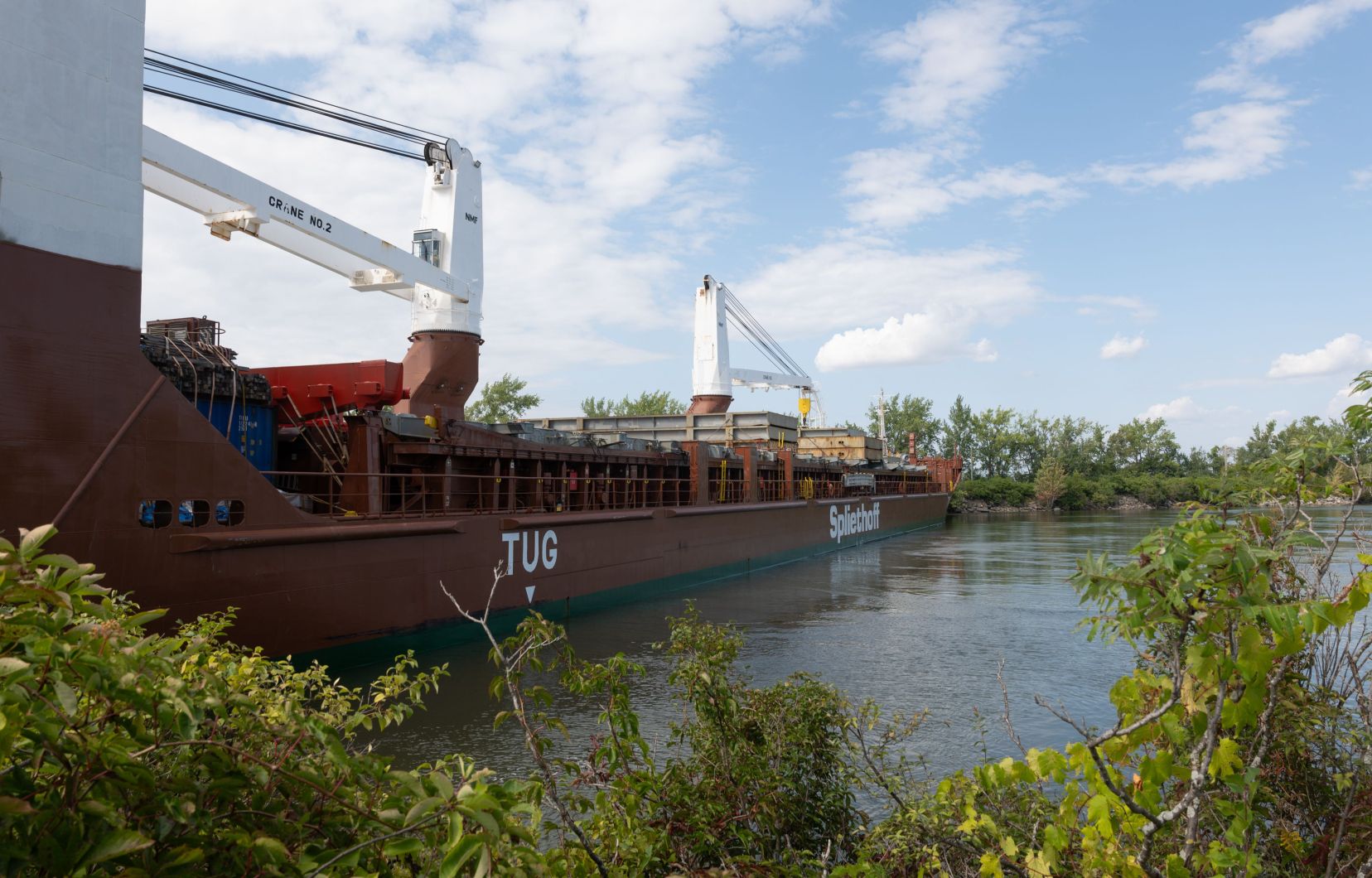The ship that ran aground Thursday evening in the St. Lawrence Seaway, near Kahnawake, was freed Saturday morning. Traffic was able to resume quickly, but the incident will still have major economic consequences.
“The bailout […] “It worked perfectly,” says St. Lawrence Seaway spokesperson Jean Aubry-Morin. The operation began at 8 a.m. Saturday morning with the help of two tugboats. “At 8:11 a.m., the ship was floating freely,” he says happily.
The vessel was redirected to the Côte-Sainte-Catherine wharf, where it will undergo an inspection. No spills were found.
“We have given the green light for the resumption of traffic for ships that are currently waiting,” said Mr. Aubry-Morin. He estimates that a dozen ships have been forced to stop. About ten others, which were ready to leave their port of origin, have been delayed and are waiting for a new passage time.
“We are currently ensuring that there is as little impact as possible on the Canadian economy as a result of this situation,” explains Mr. Aubry-Morin, especially since the seaway is the “safety valve” for the transportation of grain, potash and other commodities that are affected by the labour dispute in the railway sector.
While it is still too early to measure the economic consequences of the grounding, Mr. Aubry-Morin points out that the value of economic activity that depends on the seaway is estimated at $66 billion. Given that ships sail there 296 days a year, stopping traffic for two days “in a context where the railway puts a lot of pressure on the system […]when we’re done, we’ll probably be talking about $300 million and more.”
THE Heemskerkgrachtan ocean-going vessel flying the Dutch flag, ran aground Thursday evening around 6:30 p.m., off Kahnawake, on the South Shore of Montreal. A mechanical failure of unknown origin apparently caused the boat to lose its ability to be steered and cause it to run aground on the shore.
